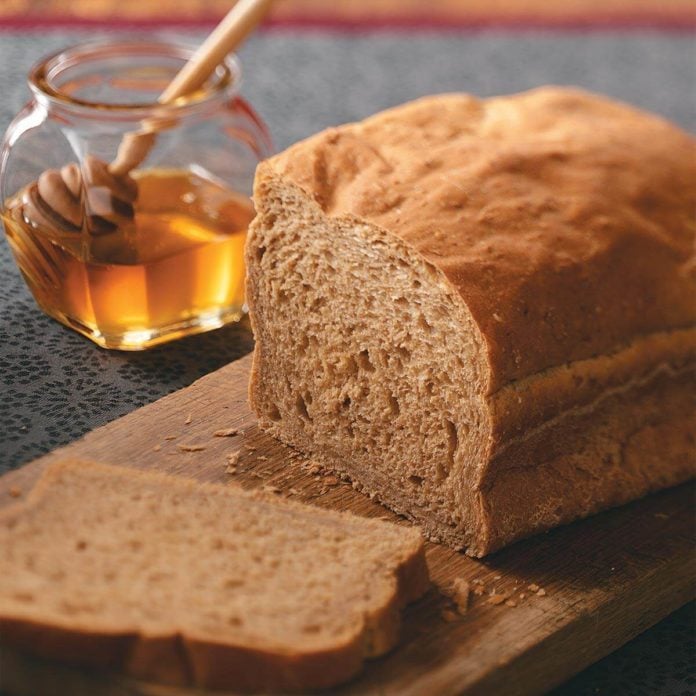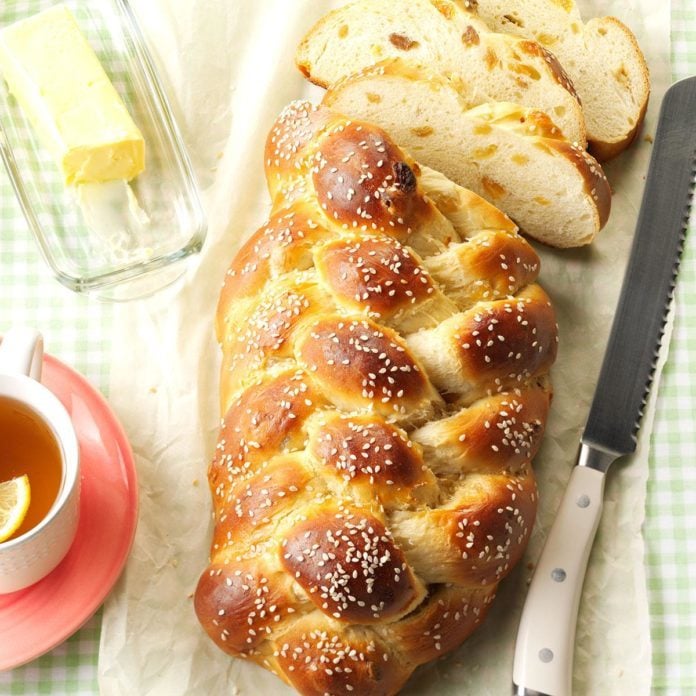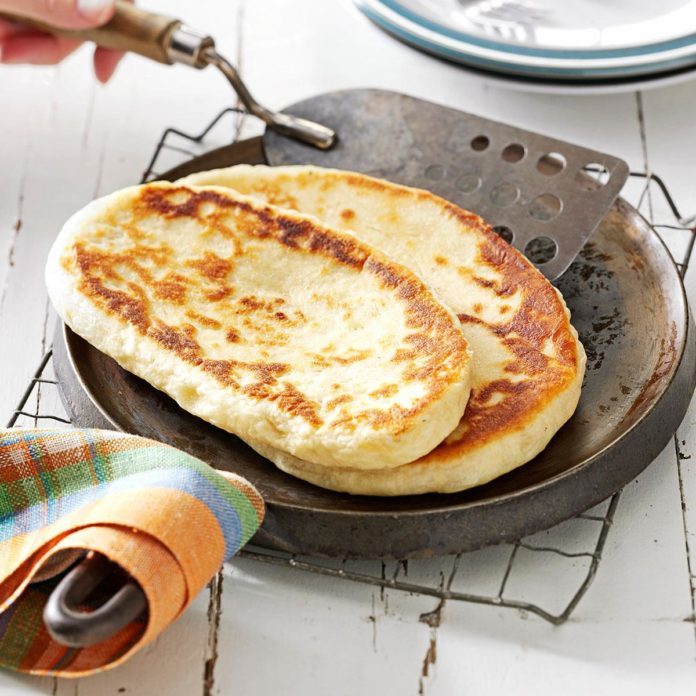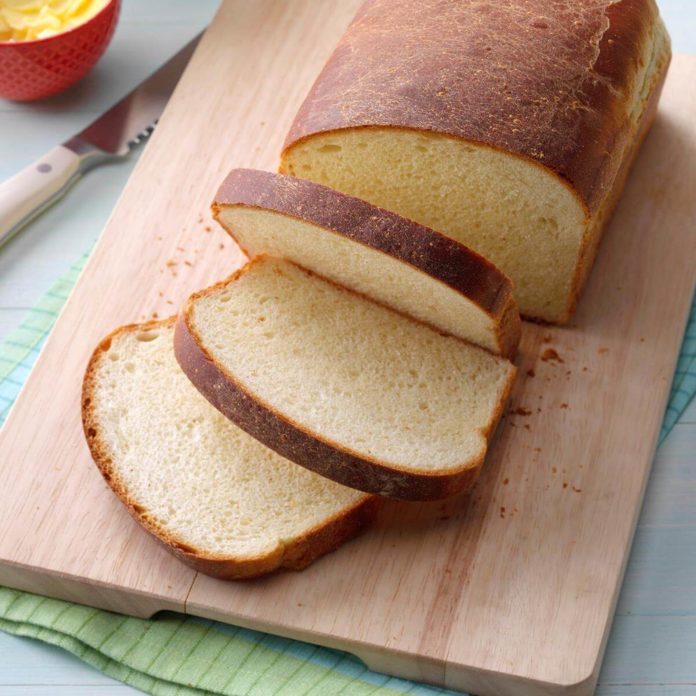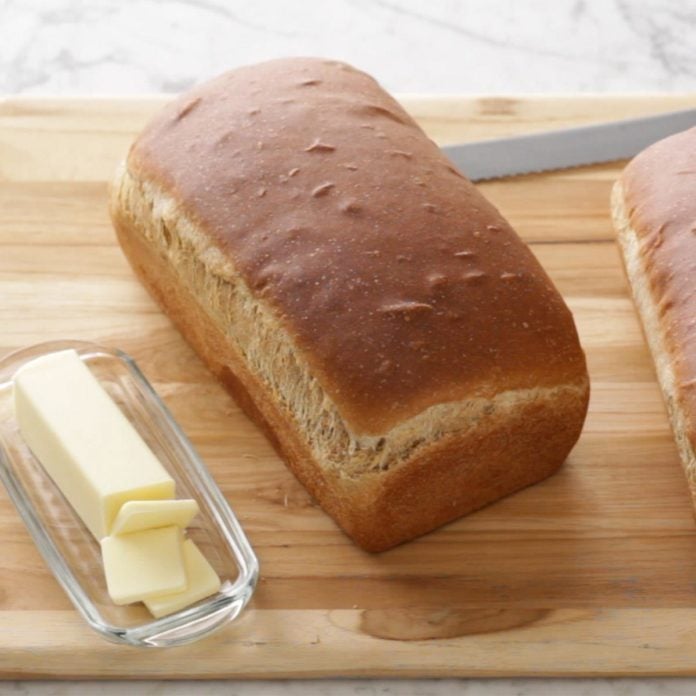It’s time for a little bread baking 101! Baking homemade bread is a joy, but plenty of questions can pop up after you’ve combined your flour, water, yeast and salt.
The question that looms largest in the minds of both amateur bakers and seasoned pros is, “how long does it take for bread to rise?” Don’t worry, we’ll break it down for you here.
How long does it take for bread to proof?
The short answer is that it depends. Factors like the temperature of your kitchen, the freshness of your yeast, humidity and water temperature can all affect the proofing time of your bread dough.
In a toasty kitchen, your dough may proof in as little as an hour (or less!). When the temperatures dip, it can take much longer—upwards of 2 or even 3 hours. Here are a few other essential tips for proofing bread when it’s cold.
How do you get dough to rise faster?
Try letting dough proof next to a heat source, or in your oven with just the light on. Since heat rises, on top of the fridge is a good spot, too!
Test Kitchen tip: Don’t forget, both sweet doughs and whole-grain loaves take longer to rise, so plan accordingly!
What’s the best container for proofing bread dough?
The ideal bread proofing bowl is glass. If you mark the outside of the bowl when you put in the dough ball, you’ll easily be able to tell when it has doubled in size. You can also use a proofing basket (perfect for sourdough), or a bread tin if you want to create a specific shape.
One of the best things for covering your dough while it’s rising is a damp cloth or paper towel. If your bowl is deep enough, use cling film. If I’m working with a particularly sticky dough, I’ll rub the tiniest amount of oil onto some cling film to help prevent my dough from sticking.
How will dough look and feel when it’s proofed?
Dough that’s risen for the right amount of time will have a full, puffed appearance. Your loaf should have expanded to roughly twice its size. To test if your dough has proofed long enough, gently poke it. It should feel soft and supple, and your finger should leave an indent in the dough.
If your bread doesn’t see enough proofing time, it won’t rise properly. You’ll wind up with a flat, dense doorstop rather than a lovely, fluffy loaf.
On the flip side, if you overproof, your dough will wind up collapsing. If you have a problem with overproofing, try letting the dough rise for a shorter period of time or at a cooler temperature.
What should you do if your dough doesn’t rise properly?
If your dough isn’t rising correctly, yeast might be past its prime or your water may have been the wrong temperature (too hot and the yeast will die; too cold and the yeast won’t grow). Always use fresh yeast and invest in a thermometer to help your yeast get the job done. You’ll be on your way to a perfect loaf of homemade bread in no time.
Our Absolute Best Homemade Bread Recipes
Who has time to make from-scratch bagels? You do, with this easy recipe! The chewy golden bagels offer a hint of honey and will win over even the pickiest eaters. —Taste of Home Test Kitchen
Get Our Honey Bagels Recipe
Whenever I pass a display of bananas in the grocery store, I can almost smell the wonderful aroma of my best banana bread recipe. It really is that good! —Gert Kaiser, Kenosha, Wisconsin
Get Our Best Ever Banana Bread Recipe
The recipe for these four-ingredient biscuits has been handed down for many generations. —Fran Thompson, Tarboro, North Carolina
Get Our Southern Buttermilk Biscuits Recipe
Present these delicious breadsticks alongside an Italian favorite like lasagna or spaghetti. They're an attractive and edible addition to the table setting! —Carol Wolfer, Lebanon, Oregon
Get Our Best-Ever Breadsticks Recipe
This chewy, old-fashioned bread boasts a slightly sweet flavor that will transport you back to the old days. —Patricia Donnelly, Kings Landing, New Brunswick
Get Our Old-Fashioned Brown Bread Recipe
I use these shiny beautiful loaves as the centerpiece of my spread. I love the taste of honey, but you can also add chocolate chips, cinnamon, orange zest or almonds. Leftover slices work well in bread pudding or for French toast. —Jennifer Newfield, Los Angeles, California
Get Our Honey Challah Recipe
It's a pleasure to serve this moist cornbread to family and guests. Honey gives it a slightly sweet taste. Most people find it's difficult to eat just one piece. -Adeline Piscitelli, Sayreville, New Jersey
Get Our Honey Cornbread Recipe
My family agrees that our Thanksgiving feast would not be complete without these light-as-air crescent rolls. They're a nice accompaniment to any menu. Baking them always puts me in the holiday spirit. —Rebecca Bailey, Fairbury, Nebraska
Get Our Sweet Potato Crescents Recipe
These soft rolls are out of this world. The addition of oat makes them a little heartier than other dinner rolls. —Patricia Rutherford, Winchester, Illinois
Get Our Oat Dinner Rolls Recipe
When I was growing up on a farm, my mom always seemed to be making homemade bread...nothing tasted so good! Now I like to make these simple yet delicious muffins for my own family. —Linda Rasmussen, Twin Falls, Idaho
Get Our Wonderful English Muffins Recipe
My family loves this as a pizza crust. But with a touch of olive oil and fresh herbs it makes a lovely flatbread appetizer. —Sue Brown, West Bend, Wisconsin
Get Our Rosemary Flatbreads Recipe
My family eats this flavorful bread as fast as I can make it. Sometimes I add different herbs, red onion or crumbled bacon. It's one of my best recipes! —Mary Cass, Baltimore, Maryland
Get Our Vegetable & Cheese Focaccia Recipe
The first time I made this recipe my husband asked it if was homemade or store-bought. When he reached for a second piece, I knew I had a winning recipe. —Roseann Loker, Colon, Michigan
Get Our Whole Wheat French Bread Recipe
You'll love the fresh garlic and herbs in this recipe. The mild cheesy duo that’s sprinkled on top makes it extra rich and wonderful. —Taste of Home Test Kitchen
Get Our Herb-Happy Garlic Bread Recipe
Chewy yeast-raised flat bread is a snap to make in a bread machine. Serve naan with your favorite Indian dish to soak up the curry and sauces. —Shannon Ventresca, Middleboro, Massachusetts
Get Our Bread Machine Naan Recipe
Here's a very easy way to have homemade bread for dinner tonight. Don't worry if you're new to baking. Anyone who can stir can make this no knead bread a success! —Heather Chambers, Largo, Florida
Get Our One-Dish No-Knead Bread Recipe
Sue Violette, of Neillsville, Wisconsin says, “A tasty mix of whole wheat and all-purpose flour, plus a small amount of mashed potatoes, give this golden bread its wonderful texture. The loaf is very moist and stays that way even days after making it.” —Sue Violette, Neillsville, Wisconsin
Get Our Amish Potato Bread Recipe
Nutmeg and cinnamon add spice to these flavorful loaves. The flecks of green zucchini and red cranberries give each slice a festive look that's just right for the holidays. —Alice Manzo, South Easton, Massachusetts
Get Our Cranberry Zucchini Bread Recipe
This gorgeous rye bread has just a touch of sweetness and the perfect amount of caraway seeds. With a crusty top and firm texture, it holds up well to sandwiches, but a pat of butter will do the job, too. —Holly Wade, Harrisonburg, Virginia
Get Our Rustic Rye Bread Recipe
My best friend, Rita, shared this irresistible Irish soda bread recipe. It bakes up high, with a golden brown top and a combination of sweet and savory flavors. —Jan Alfano, Prescott, Arizona
Get Our Favorite Irish Soda Bread Recipe
For many years, I've been making 45 loaves of this bread for an annual Christmas bazaar, where we feed bread and soup to over 300 folks. — Beverley Whaley, Camano Island, Washington
Get Our Country Crust Sourdough Bread Recipe
I usually have to double this flour tortilla recipe because we go through them so quickly. The homemade tortillas are so tender and chewy, you’ll never use store-bought again after learning how to make tortillas. —Kristin Van Dyken, West Richland, Washington
Get oUR Homemade Tortillas Recipe
Anytime is the right time for a comforting slice of homemade bread. These loaves are especially nice since the crust stays so tender. This white bread recipe is my husband Nick's favorite. He makes most of the bread at our house. —Joanne Shew Chuk, St. Benedict, Saskatchewan
Get Our Country White Bread Recipe
I'm 12 years old and make this bread with my mother, who got the recipe from her mother. I usually make the dough, and my mom bakes it.
Get Our Whole Wheat Bread Recipe
My stepmother passed on the recipe for this delicious yeast coffee cake that's shaped into pretty rings. When I make it for friends, they always ask for seconds. —June Gilliland, Hope, Indiana
Get Our Maple Butter Twists Recipe
The post How to Tell If Your Bread Has Risen Enough appeared first on Taste of Home.
Camille Berry




